Introduction:
The urgent need for coastal cities to act on climate
As climate risks increase globally, so do risks to the
65 million people
who live in U.S. coastal cities.1 Hurricanes, sea level rise, and extreme rainfall are already
affecting U.S. coasts, with metropolitan areas being at
high risk
due to their outdated infrastructure, impervious surfaces, and increased development. Our physical, social,
and economic well-being depends not only on cutting carbon emissions to prevent the worst climate impacts from
occurring, but also on adapting to our changing world.
The U.S. coastal economy supports
58.3 million jobs
and contributes $11 trillion annually in goods and services, or 43% of our total gross domestic product.
Rising seas, storms, flooding, and erosion fueled by climate change exact a grim toll, both in terms of
loss of life
and damage to the
economy. Resilience in coastal cities
is also an issue of justice—nearly
60%
of their residents are people of color, 50% are renters, 16% are living in poverty, and 13% are
non-citizens—each higher than the corresponding national average— and climate impacts are
disproportionately borne
by historically disadvantaged communities.
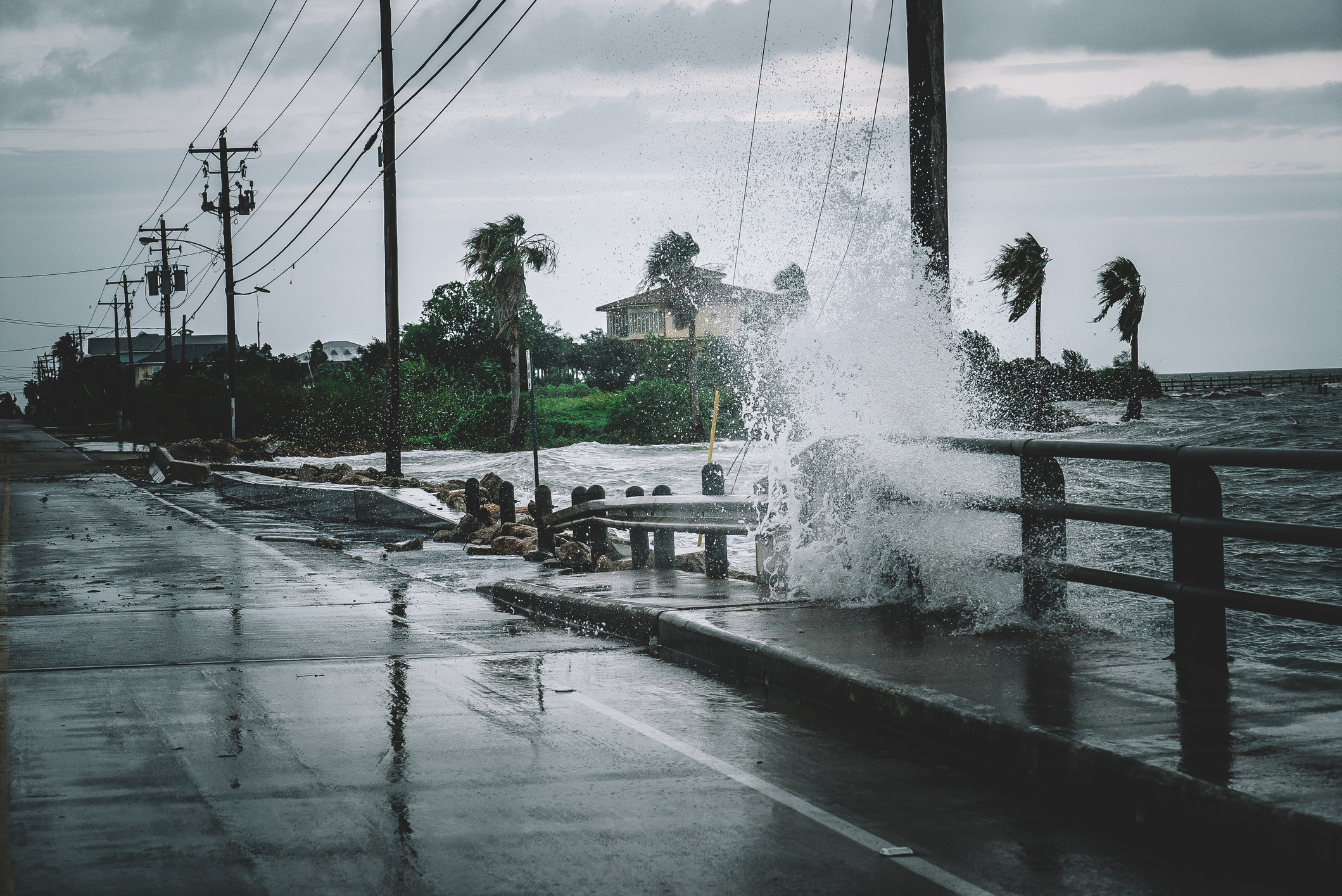
Houston during Hurricane Harvey in 2017. The storm generated 60 inches of rain, produced $125 billion in damages, and killed 36 people in the Houston metropolitan area. The U.S. experienced 19 billion-dollar disasters that year, and 118 from 2018–2023.
Without adequate adaptation efforts, coastal areas could experience up to $146 billion in annual property losses by 2090 and commensurate negative impacts to communities’ health and safety. While planning has been done (to date 34% of U.S. coastal cities currently have climate action plans 2), implementation lags significantly, leaving cities unprepared for worsening coastal hazards—a concept sometimes referred to as the “coastal adaptation gap.” Additionally, more than half of U.S. coastal communities rely on data that underestimates current and future sea level rise, often using risk assessments that are inconsistent with the latest climate science.
The science is clear: Urgent action is needed in U.S. coastal cities, and policy must swiftly recalibrate to address the rapidly intensifying impacts of climate change. Federal action is underway, including the Inflation Reduction Act and the Infrastructure Investment and Jobs Act, from which UOL identified $21.7 billion in funding available to coastal cities—an unprecedented level of federal investment to advance the resilience of our coasts. Now is the time for the implementation of effective solutions at the local level.
Due to their large and dense population, their accompanying economies and infrastructure, and their physical proximity to multiple climate threats on and offshore, coastal cities are uniquely positioned to advance climate and ocean policy solutions, and the breadth of the work needed is vast—from transitioning to renewable energy to building more climate-resilient infrastructure.
Through Urban Ocean Lab (UOL)’s coastal lens, we have identified five key policy themes—each with recommended actions—to help coastal cities meet this crucial moment:
Coastal Ecosystems
Offshore Renewable Energy
Infrastructure
Community Resilience
Climate-Driven Relocation
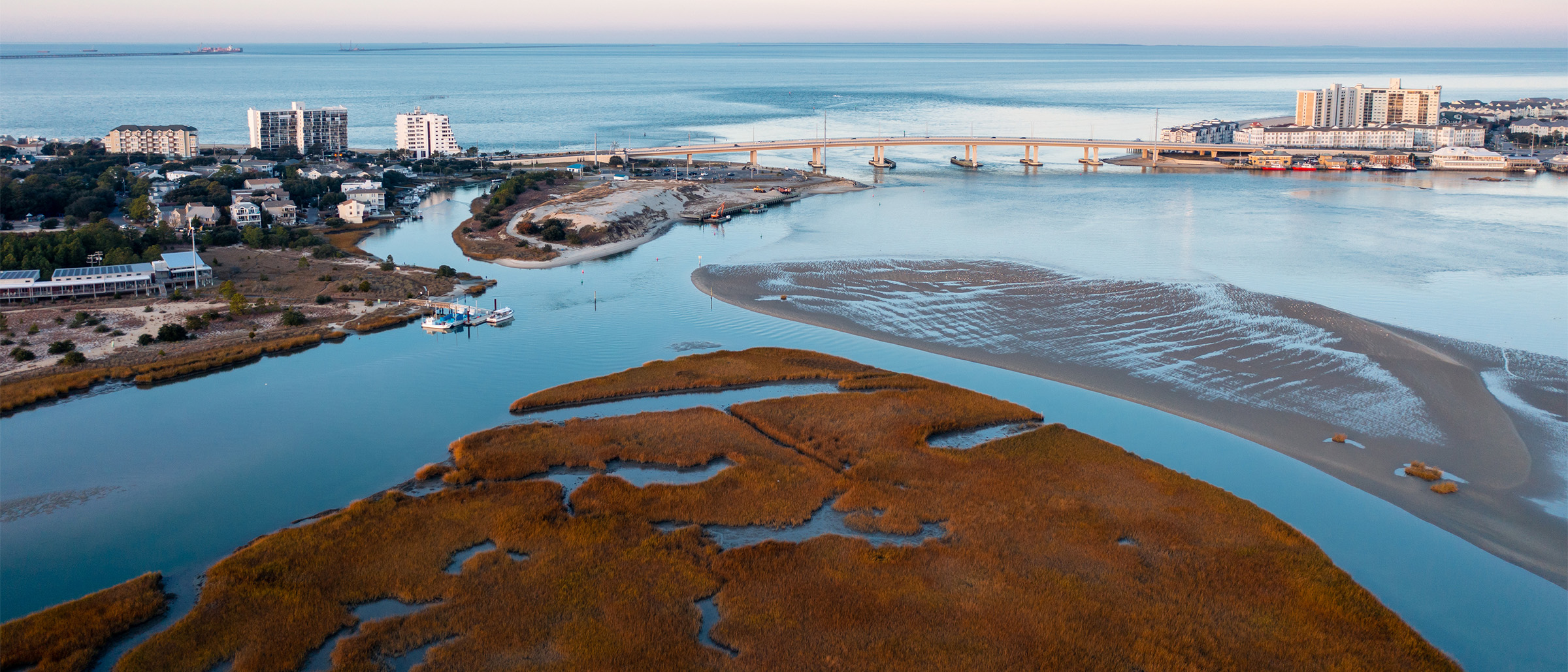
Coastal Ecosystems
30%
The minimum share of U.S. lands and waters that experts have urged policymakers to protect by 2030.
Climate change is only worsening this ecological
degradation, and millions of tons
of methane are released as these ecosystems are destroyed. Warmer ocean temperatures are threatening seagrass meadows and kelp forests, increasing the frequency of
coral bleaching events, and
accelerating sea level rise, flooding, and coastline erosion. Additionally,
the ocean has absorbed around
30%
of the carbon dioxide released by burning fossil fuels, increasing ocean acidity by 30%
and making it harder for shellfish
and
corals
to grow their shells and skeletons. By 2100, without dramatic emissions reductions,
97%
of coastal wetlands and $732 billion in ecosystem services could be lost to sea level rise and development.
Urban coastlines have been
hardened
with infrastructure and buildings at an alarming rate
—
more than half
of the natural shoreline ecosystems in major coastal cities around the world have been replaced. Historically,
intact coastal ecosystems provided natural shoreline protection, buffering the impact of storms—often
more effectively
than expensive seawalls. Without healthy coastal ecosystems, urban populations are more vulnerable to
sea level rise,
storm surge,
regional and local economic downturn, and severed cultural and social
relations with coastlines. To prevent further harm to ecosystems and communities, and
prepare
for climate change, local governments should work to protect, restore, and equitably manage coastal ecosystems.

Giant kelp grows in coastal waters off of California, pro-viding habitat for animals and protecting coastal cities.
Protection
Given the relatively small remaining extent of coastal ecosystems in urban settings, and the many benefits they offer, protecting these ecosystems from the impacts of climate change, pollution, development, and extraction is essential. Experts are urging policymakers to protect at least 30% of U.S. lands and waters by 2030. Coastal cities must safeguard the biodiversity and resilience of the remaining coastal ecosystems.

Jamaica Bay is New York City’s largest wetland. Before its designation as a wildlife refuge, it was acutely threatened by human activity for decades. Its location (and sea level rise) necessitates continued and rigorous protection efforts.
Recommended Actions: Protection
Identify and expand the suite of legislative and regulatory options for ecosystem protection, by working with state and federal authorities.
Ensure coastal development does not adversely impact coastal ecosystems, by establishing and improving local protection policies, such as no net loss, green permits, and green taxes and fees.
Address nutrient pollution, stormwater runoff, and sewer overflows by implementing green infrastructure and water treatment approaches that prevent toxins and contaminants from entering the ocean and Great Lakes.
Partner with local conservation organizations.
Integrate education, research, and workforce development opportunities into protection initiatives.
Restoration
Coastal and marine ecosystems are deteriorating globally, and toxic runoff into estuaries has increased since the 1960s, causing larger hypoxic areas. In the U.S., significantly cutting greenhouse gas emissions and preserving land for restoration could expand coastal wetlands by 25% by 2100. Coastal cities must prioritize coastal restoration efforts that maintain ecosystem health and community well-being by improving adaptation to climate change, increasing carbon sequestration, and enhancing biodiversity.
Artificial tide pools provide habitat for marine life in New York Harbor as part of the Living Breakwaters project. Photo: SCAPE. Project designer: SCAPE. Project sponsor: NYS Office of Resilient Homes and Communities
Recommended Actions: Restoration
Develop appropriate urban coastal ecosystem restoration plans, focused on identifying suitable project locations and partners, via input from coastal communities.
Collaborate with state and federal agencies on restoration projects, and encourage the inclusion of coastal restoration in regional management plans.
Shorten permitting timelines, lower permitting costs for restoration projects, and improve publicly available information on restoration permits.
Partner with private developers and landowners to catalyze restoration projects that maintain ecosystem health and community well-being.
Equitable management and access
Equitable management seeks to ensure that the protection and restoration of coastal ecosystems delivers sustainable and just outcomes for both the environment and the people who rely on it. For instance, partnerships and land co-management with Indigenous communities can better support ecosystem biodiversity. Conversely, discriminatory housing and land use policies (like redlining and restrictive zoning) have disproportionately exposed historically disadvantaged communities to toxic waterways and increased flood risk. Additionally, communities of color are three times more likely than white communities to live in nature-deprived places—nationwide, 70% of low-income communities live in nature-deprived areas, and only 10% of the U.S. coast and Great Lakes is covered by strong legal protections for public coastal access. Cities must ameliorate these inequalities when developing coastal management plans.
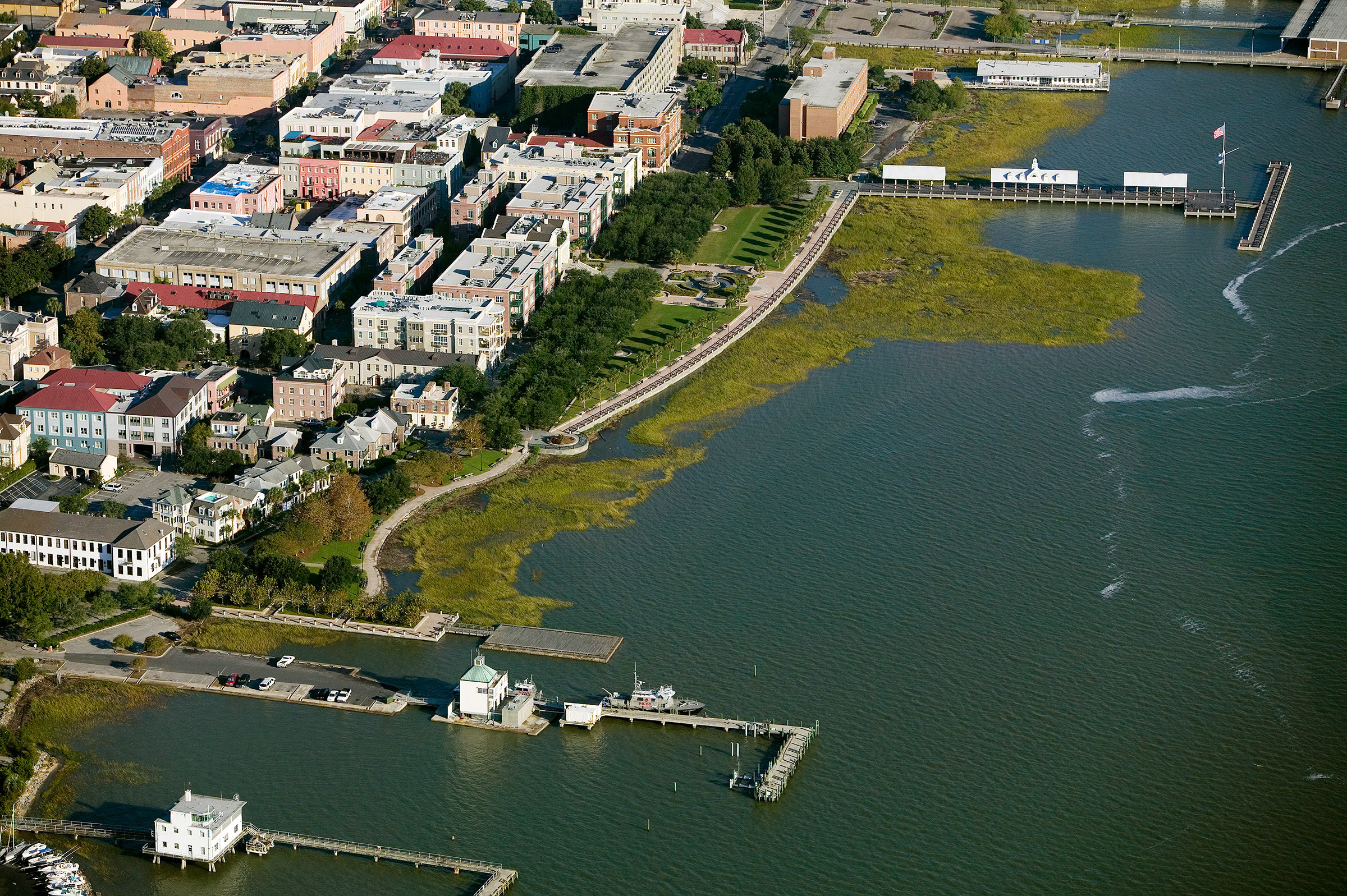
Charleston Waterfront Park project created new access points to the Cooper River in Charleston, South Carolina, restored salt marshes, and provided recreational opportunities for residents. Photo: Landslides, Courtesy of Sasaki
Recommended Actions: Equitable management and access
Direct funding and resources towards local coastal ecosystem restoration and protection projects, with a focus on neighborhoods facing higher exposure to flooding, the urban heat island effect, pollution, and other climate impacts.
Enhance equitable access to shorelines and coastal and ocean ecosystems, including for provisional, recreational, and cultural activities.
Improve equitable management by increasing staff diversity in city conservation and environmental agencies, including in leadership positions.
Develop meaningful partnerships with Tribal nations, co-creating (co-)management plans, where applicable.
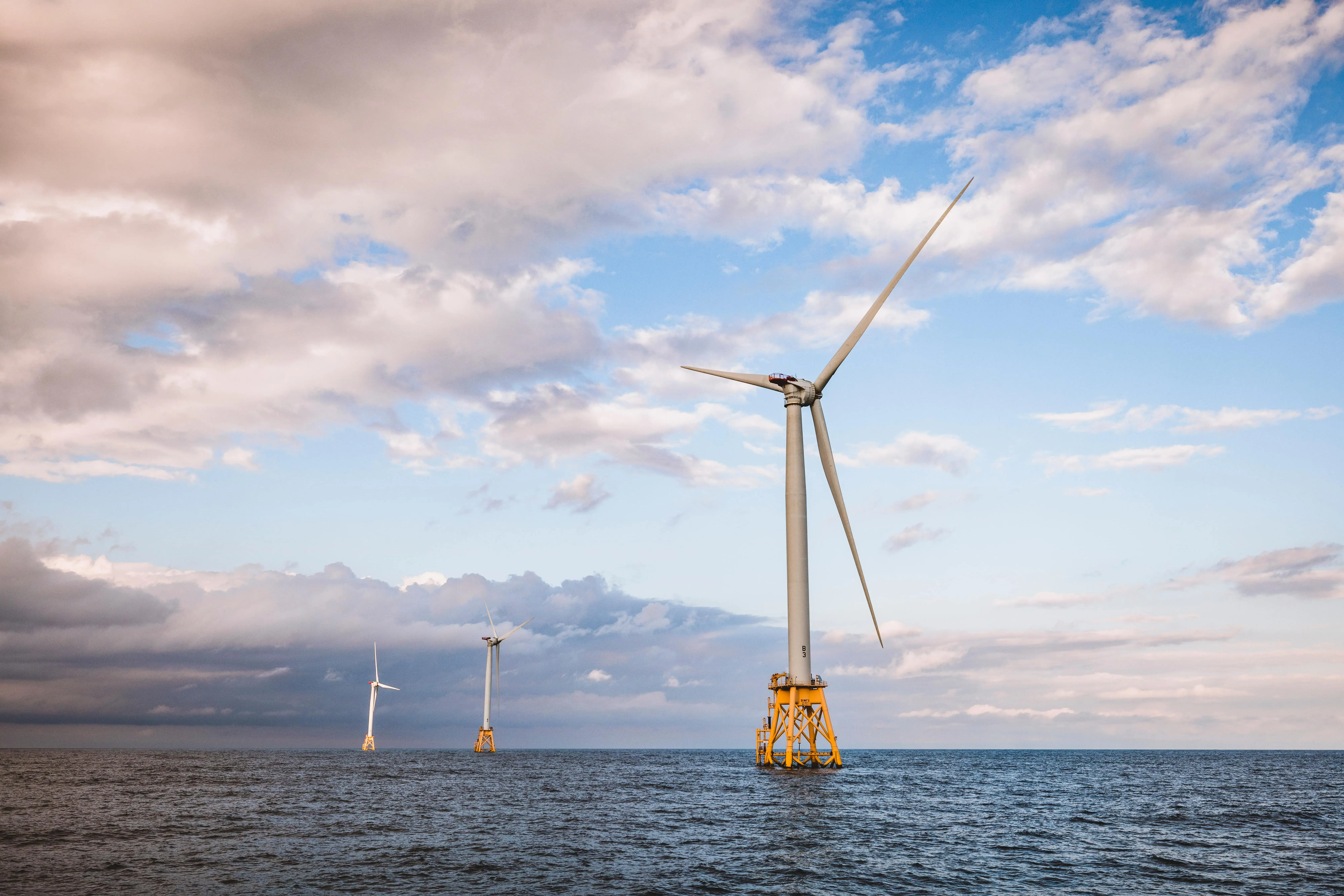
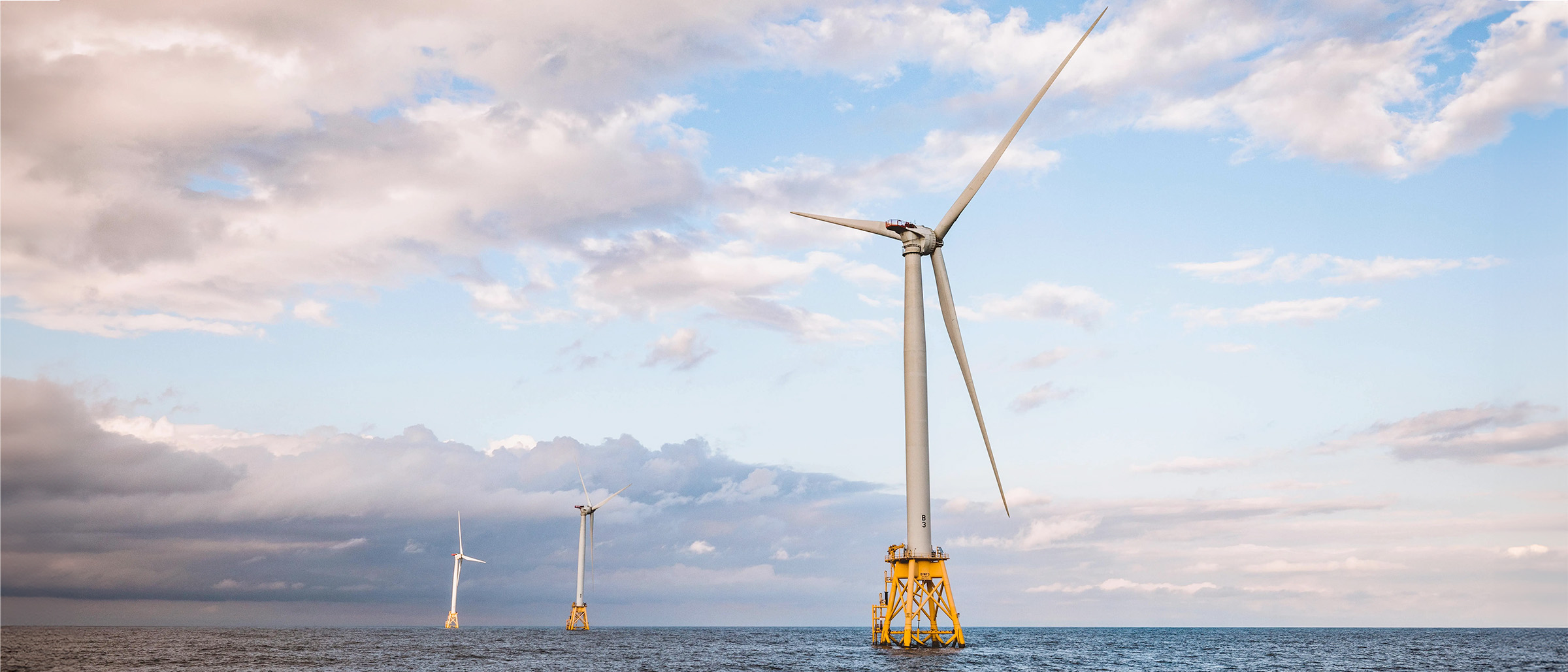
Offshore Renewable Energy
Cities generate over
80%
of global gross domestic product, and consume
75%
of global primary energy, while emitting up to
70%
of the world’s greenhouse gas emissions. In the U.S., about
half
of the country’s emissions come from our 10 largest cities and top 5% of the most affluent non-urban
areas. Globally,
eight
of the ten largest cities in the world are coastal. Coastal cities are well-positioned to help the U.S.
achieve emissions reductions targets by transitioning to justly sourced, renewable, carbon-free energy
sources, and ensure effective transmission and storage for grid reliability. This can and should include
offshore energy—primarily offshore wind at present, and possibly wave, tidal, and thermal energy in the
future.
As a result of
extractive and discriminatory economic policies, fossil fuel infrastructure has often been sited in or adjacent to
low-income communities and communities of color. To redress past and ongoing harms, coastal cities must support
a just transition to offshore renewable energy that benefits local communities. By developing workforce training
programs, investing in research, and providing onshore infrastructure, coastal cities can actively contribute
to a cleaner, more equitable energy future.
Offshore wind energy
+4,200 GW
The amount of energy that could delivered by the U.S.’s offshore wind resources—over 3x the current demand of the entire electric grid.
Recommended Actions: Offshore wind energy
Facilitate community-based planning for offshore wind projects to be responsibly developed and serve local interests.
Host and support workforce development programs to promote community participation and ensure local residents will be eligible for jobs in the sector, including roles in port operations, vessel construction, and related fields.
Facilitate multi-stakeholder interactions to identify port-specific needs and other shore-based coordination steps to ensure responsible electrical grid interconnection, operations, and management of wind farm support.
Buy energy from private farms through power purchase agreements, support the development of public power utilities, and consider expanding the mandate of existing public utilities to build offshore wind farms when feasible.
Ensure community revitalization funds from offshore wind developers are established and properly used to support local residents.
Other offshore renewables
Wave, tidal, thermal, and floating solar are promising options for future offshore energy generation. Together, they could theoretically meet 57% of the country’s annual electricity demand; however, considering regulatory constraints, social acceptance, competing uses, and other factors, that percentage would realistically be considerably smaller. Coastal cities should consider advocating for and supporting associated research, development, and community education efforts to support improved technologies and their responsible deployment. If a variety of renewable energy options are available, developers, cities, and coastal communities can collaborate to tailor energy systems to the unique conditions and needs of each area.

A floating solar panel farm on a retention pond near Sayreville, New Jersey.
Recommended Actions: Other offshore renewables
Support and host research programs on offshore renewable energy technologies through partnership programs such as the Offshore Wind Innovation Hub and participation in federal funding programs, like Advanced Research Projects Agency-Energy, and other collaborative opportunities.
Designate specific shoreside areas within their jurisdiction to support offshore renewable energy testing and research.
Identify economic development opportunities for offshore renewable energy systems within their jurisdiction.
Transmission and storage
New offshore power sources will need to connect to the grid to ensure that energy can reach consumers. However, transmission points for offshore systems are currently limited, and more than 70% of onshore transmission and distribution lines are over 25 years old, nearing the end of their expected 50-year lifespan. It is critical for the U.S. to build updated transmission systems to support existing and planned offshore energy. The U.S. Department of Energy has released a transmission action plan for offshore wind in the Atlantic, which describes opportunities for coastal cities to improve collaboration, siting, standardization, and other support initiatives for offshore renewable energy transmission. Because offshore renewable energy relies on natural processes to generate power, production cannot easily ramp up during peak hours, and it will be key to, in tandem, develop energy storage opportunities.
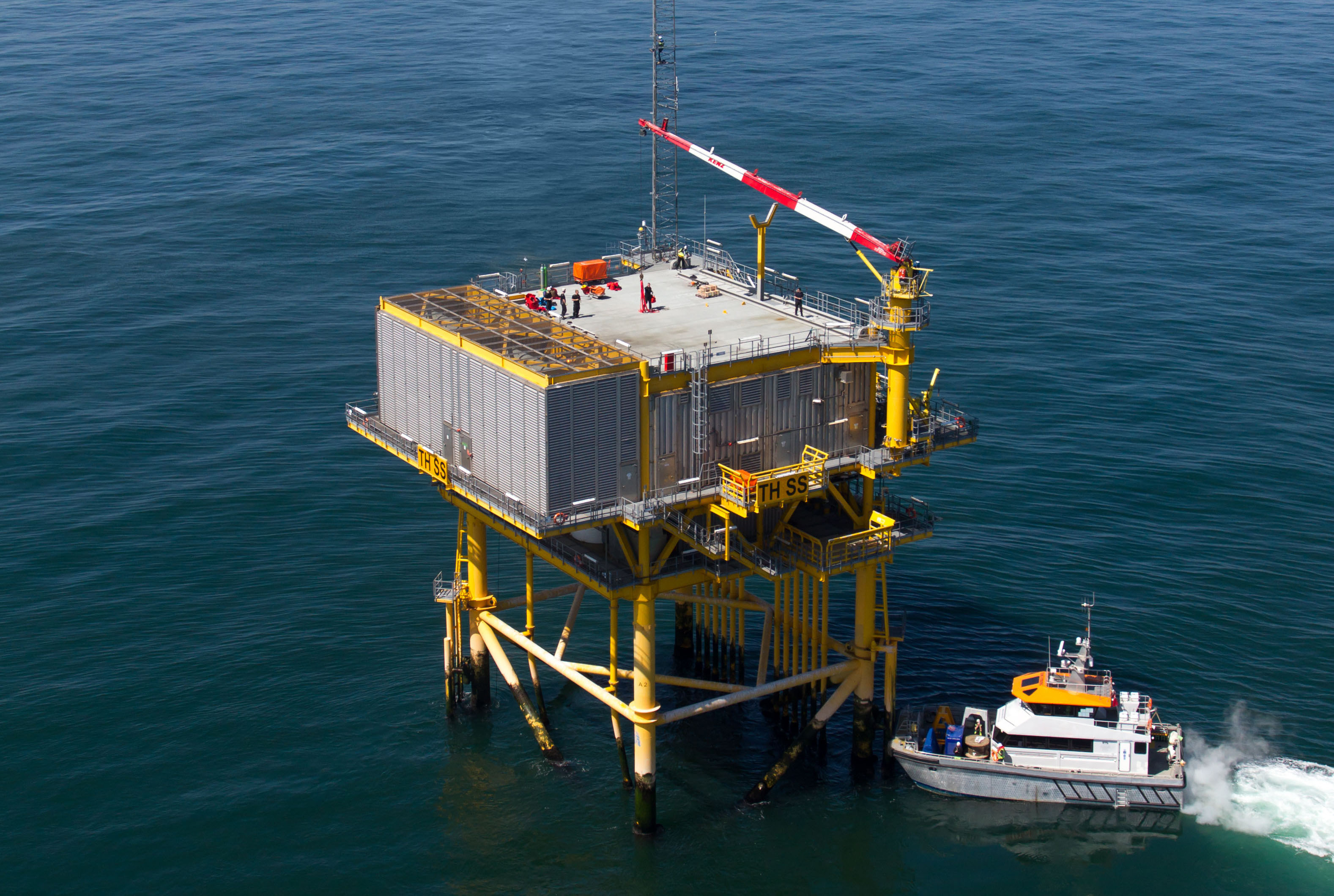
Offshore substations are critical connection points between the grid and offshore renewables.
Recommended Actions: Transmission and storage
Engage and facilitate community involvement in the public process to identify optimal transmission opportunities.
Coordinate with energy utilities and other cities to site transmission connections to the onshore grid in appropriate places.
Increase the capacity of battery systems to store energy to help maintain a reliable and functional energy grid.
Advocate for research and development to improve battery safety—including fire safety—and performance, and reduce the environmental impacts of producing and decommissioning battery systems.
Support and advocate for port development needed for adequate transmission deployment.

Infrastructure
After years of disinvestment, U.S. infrastructure has
fallen into disrepair, becoming increasingly vulnerable to breakdowns—a situation
exacerbated
by the escalating severity, frequency, and duration of climate
events. The rigidity of infrastructure and the agencies that govern it can perpetuate
environmental degradationand
social injustice,failing to address the needs of coastal city communities and ecosystems.
Globally,
75%
of the infrastructure that cities will need by 2050 (to accommodate population growth and structural wear
and tear) has yet to be built. This is a huge opportunity to properly site, design, and build more
climate-resilient infrastructure to withstand extreme weather, sea level rise, and other threats. In
tandem, a historic influx of federal funding from the Inflation Reduction Act and Infrastructure
Investment and Jobs Act is now flowing to coastal cities. To prevent maladaptation and ensure new
investments do not replicate past harms, coastal cities must commit to a just and sustainable approach to
creating and locating climate resilient infrastructure projects, while investing in retrofitting and
adapting existing infrastructure.
Seaports and airports
Most coastal cities owe their existence to their natural harbors. In their formative years, labor and investment crowded around these landforms where seaports were developed, facilitating maritime trade and stimulating industries like fishing, shipbuilding, and manufacturing, and thus catalyzing urban development. In recent decades, commercial airports have played a similar role, acting as conduits for global connectivity and further propelling local and regional growth. However, many seaports and airports are susceptible to climate impacts such as rising sea levels and extreme weather events. Port adaptation demands a mix of approaches, depending on the context. As cities consider how their ports can be altered to continue serving their purpose, they must also plan to eliminate the burden that seaports and airports place on environmental justice communities.
Recommended Actions: Seaports and airports
Adopt and enforce planning, zoning codes, and construction standards that account for climate shocks (e.g. cloudbursts and storm surge) and stressors (e.g. increasing heat and sea level rise).
Increase funding for port resilience planning.
Support decision-making for more climate-ready ports with infrastructure and land use planning tools for city staff and port planners.
Invest in protective infrastructure by incorporating natural barriers, like mangroves and wetlands, and engineered defenses, if and when appropriate. Consider elevation of critical infrastructure and relocation of some port facilities to less vulnerable areas
Working waterfronts
Find federal funding opportunities for infrastructure in our guidebook.

Workers unload mussels for processing in coastal Maine. Fewer than 20 miles of the state’s 5,000 miles of coastline remain as working waterfronts, having rapidly disappeared. Photo: Gulf of Maine Research Institute
Recommended Actions: Working waterfronts
Use public grants, loans, or tax policies to subsidize industrial waterfronts and related infrastructure.
Purchase and acquire coastal property for public use or public-private partnerships.
Conduct land use planning and zoning to help secure industry access to the waterfront and necessary infrastructure.
Collaborate with state agencies to develop working waterfront plans and programs.
Water management
+$744 billion
The investment needed in drinking water and wastewater systems over the next 20 years in the U.S.
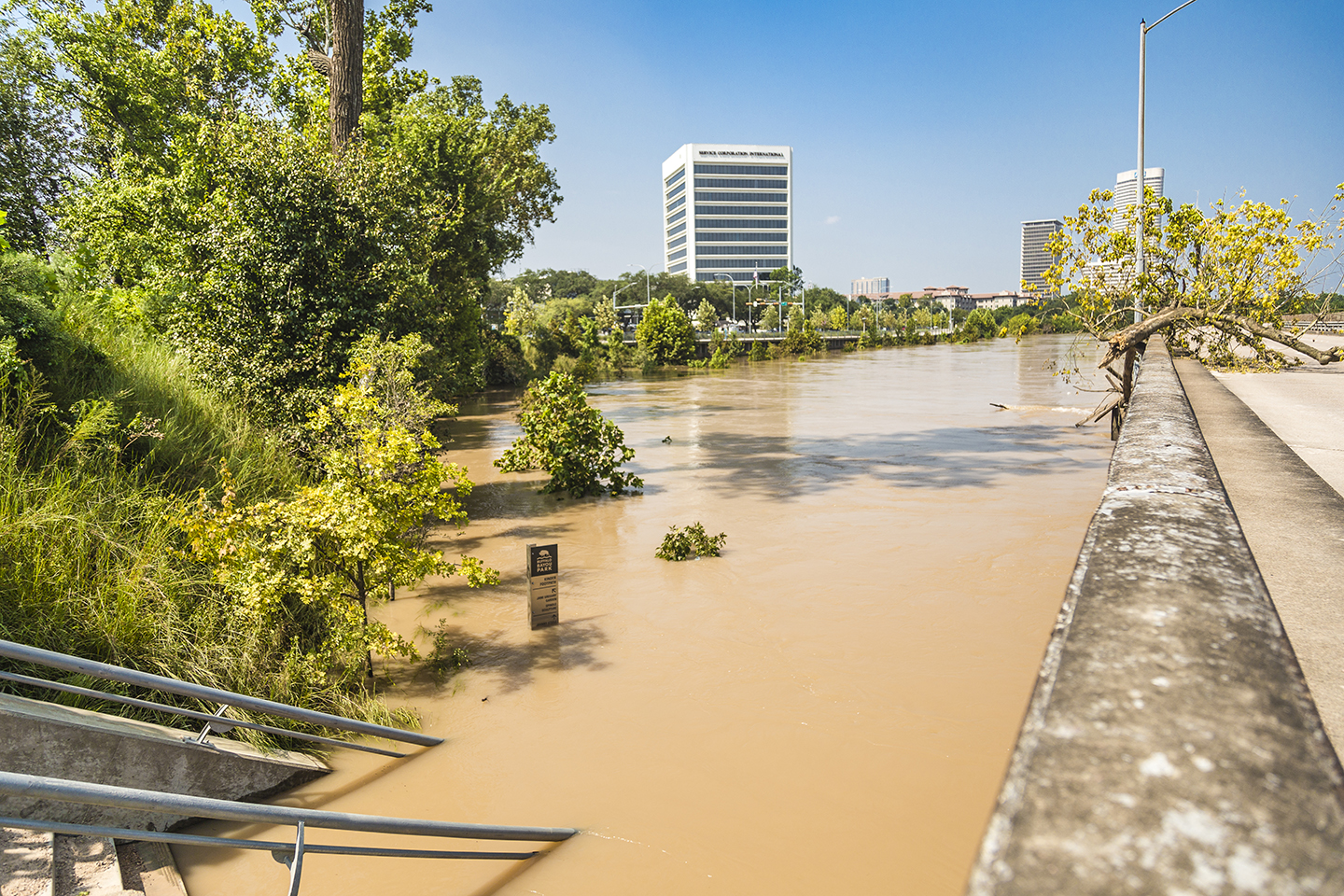
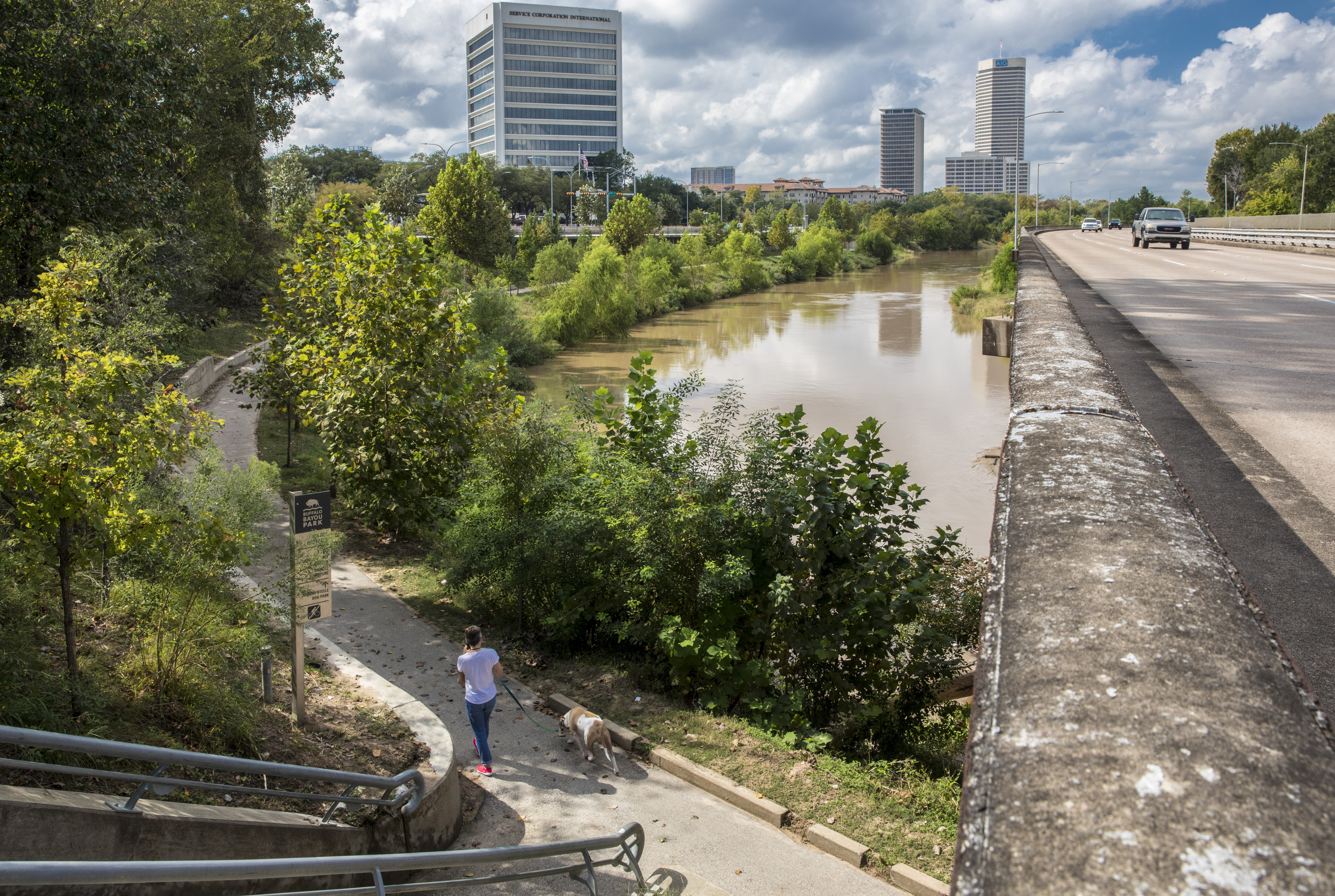
Top: A portion of Buffalo Bayou Park in Houston after Hurricane Harvey. Bottom: The same park, one year later. The 160-acre public space designed by SWA was designed to flood, helping the city prepare for extreme weather events. Harvey produced more rain (+60” in parts of Texas) than any other tropical cyclone in U.S. history. Photo: © SWA
Recommended Actions: Water management
Retrofit, elevate, or relocate water facilities at risk from climate impacts.
Ensure comprehensive management of the full water cycle through sustainable water use and coordinated management across sectors.
Mandate and incentivize the construction and maintenance of green infrastructure—such as rain gardens, permeable pavers, and green roofs—on both public and private land to absorb rain and reduce runoff.
Require the development and implementation of plans to mitigate CSOs, focusing on infrastructure separation, increased water storage capacity, and enhanced monitoring systems to manage and prevent overflows.
Diversify water sources and adopt water efficiency measures, such as water metering and wastewater reclamation, to reduce stress on groundwater aquifers and mitigate saltwater intrusion.
Incorporate green-gray strategies into protective shoreline infrastructure.
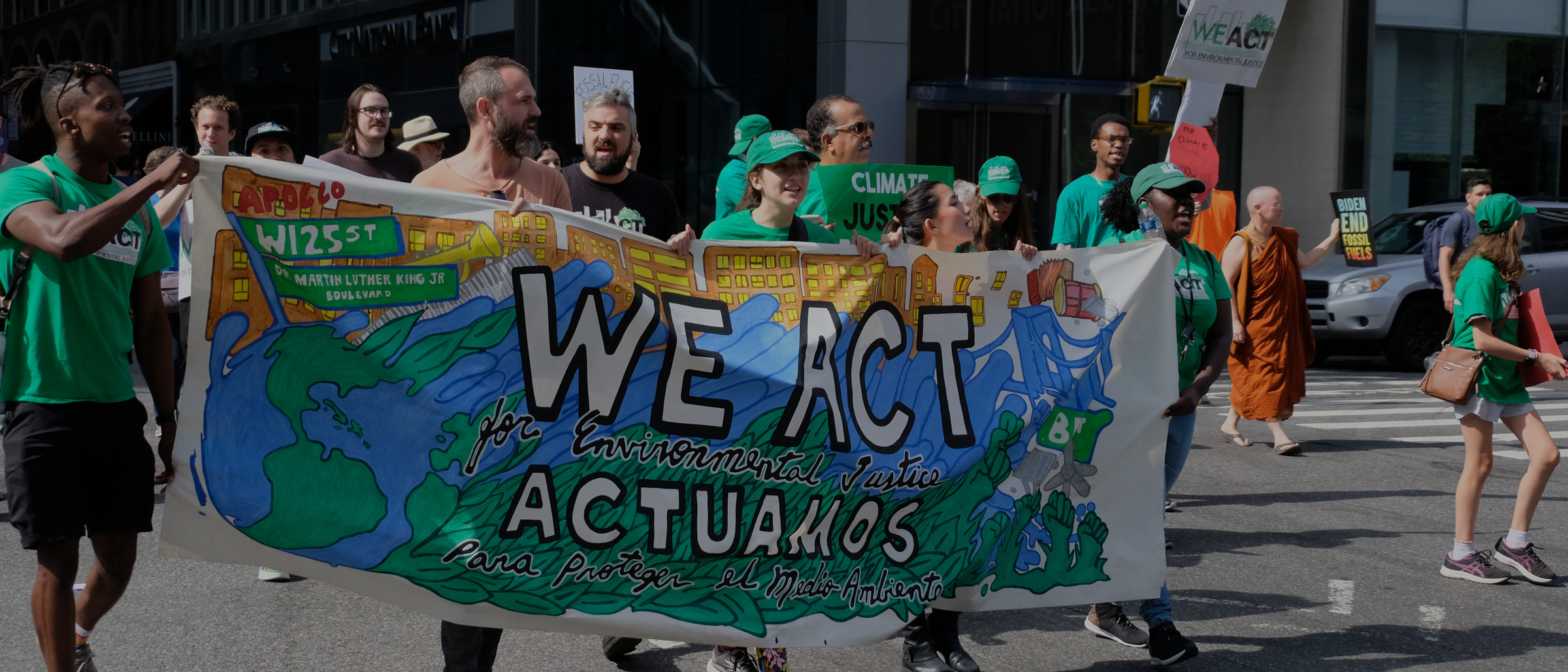
Community Resilience
Climate change poses significant risks to
community wellbeing
and
social cohesion.
Although there is no common definition of
community resilience,
UOL conceives of it as the ability of a group to harness and cultivate local knowledge, resources, and
networks to effectively prepare for, withstand, and respond to climate shocks and stressors.
When coastal cities support community resilience, they can improve disaster preparedness and response, social
equity, economic stability, and environmental sustainability, and ensure frontline communities do not continue
to be
disproportionately impacted
by climate change. New York City was unprepared for Superstorm Sandy, and
social cohesion
and capital were critical to the city’s recovery: In the wake of the storm, community organizations and local
nonprofits led emergency response efforts, providing essential services to residents who were left without
power, heat, or running water for days on end. Effectively fostering community resilience hinges on community
involvement, power sharing, and collaboration; workforce development and related community programming; and
improving livelihoods and health.
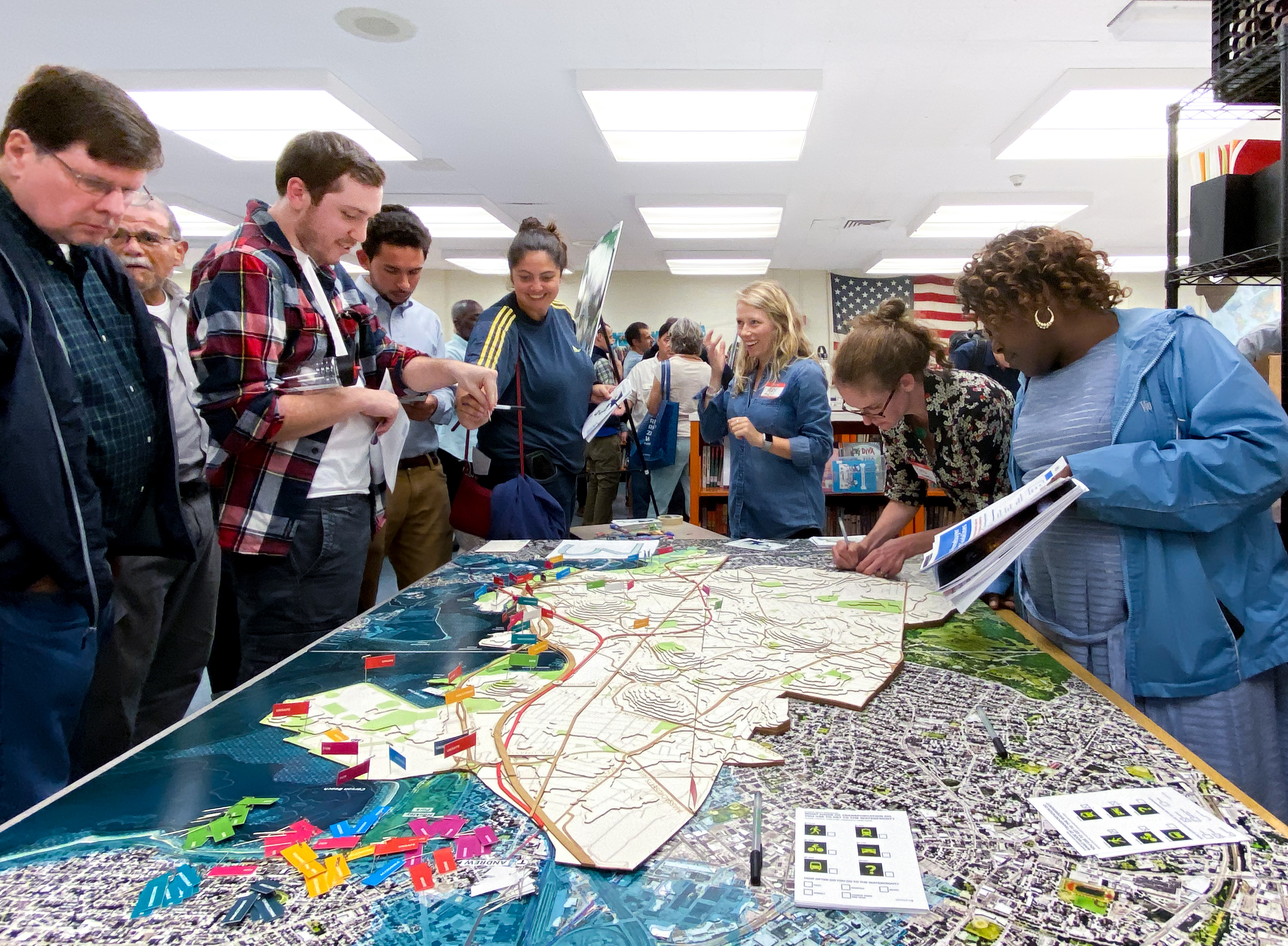
In Boston, community members provide input on Coastal Resilience Solutions for Dorchester, a plan to prepare the neighborhood for coastal flooding and sea level rise. The plan is part of the Climate Ready Boston initiative. Photo: SCAPE
Community involvement, power sharing, and collaboration
Historically, government-led community engagement with underserved groups has often been superficial,
opaque, or disingenuous, leading to distrust. By recognizing, honoring, and leveraging local expertise
through
participatory governance,5 cities can foster inclusivity and equity, amplify the effectiveness of disaster response
strategies, and encourage greater social cohesion and collaboration.
Community-based organizations (CBOs)—local entities often trusted and adept at catalyzing engagement and action
in neighborhoods—are at the heart of this work. CBOs frequently run dedicated, physical hubs that serve multiple
purposes, including spaces for gathering people
during and after disasters
and for exchanging goods, services, and information. By working with these organizations, city governments can
create a strong and responsive network of nodes to foster community resilience.
Recommended Actions: Community involvement, power sharing, and collaboration
Build and deepen relationships with community members, key community-based organizations (CBOs), and broader networks or alliances.
Collaborate with community members and CBOs on implementing or strengthening disaster preparedness plans via emergency management staff.
Provide local funding (or facilitate the use of federal funds) to support leadership and advisory positions for CBO members to participate in neighborhood and citywide climate planning.
Improve access to funding by providing CBOs with technical grant writing assistance, simplifying grant applications, and permanently increasing municipal budgets for community programs.
Workforce development and related community programs
20,000 people
will be employed by the American Climate Corps in the program’s first year.
Recommended Actions: Workforce development and related community programs
Provide comprehensive support, such as upskilling and reskilling programs, career counseling, and financial assistance for local community members interested in low-carbon careers and workers displaced by a transition to a low-carbon economy.
Foster partnerships with private sector companies, trade unions, and educational institutions to align workforce training with the current and future needs of a green economy.
Develop a job creation and placement program for climate roles in the public and private sectors.
Ensure a diverse and inclusive climate workforce by prioritizing unemployed, underemployed, and other underserved groups in the accessibility and design of programs.
Offer tax incentives and grants to businesses that create jobs in the green economy, particularly in areas most affected by the decline of fossil fuel industries.
Create economic programs that center the priorities of disaster-affected communities (as opposed to status quo disaster capitalism).
Disaster preparedness and recovery
Read our report on community-led response, recovery, and resilience in NYC after Superstorm Sandy.
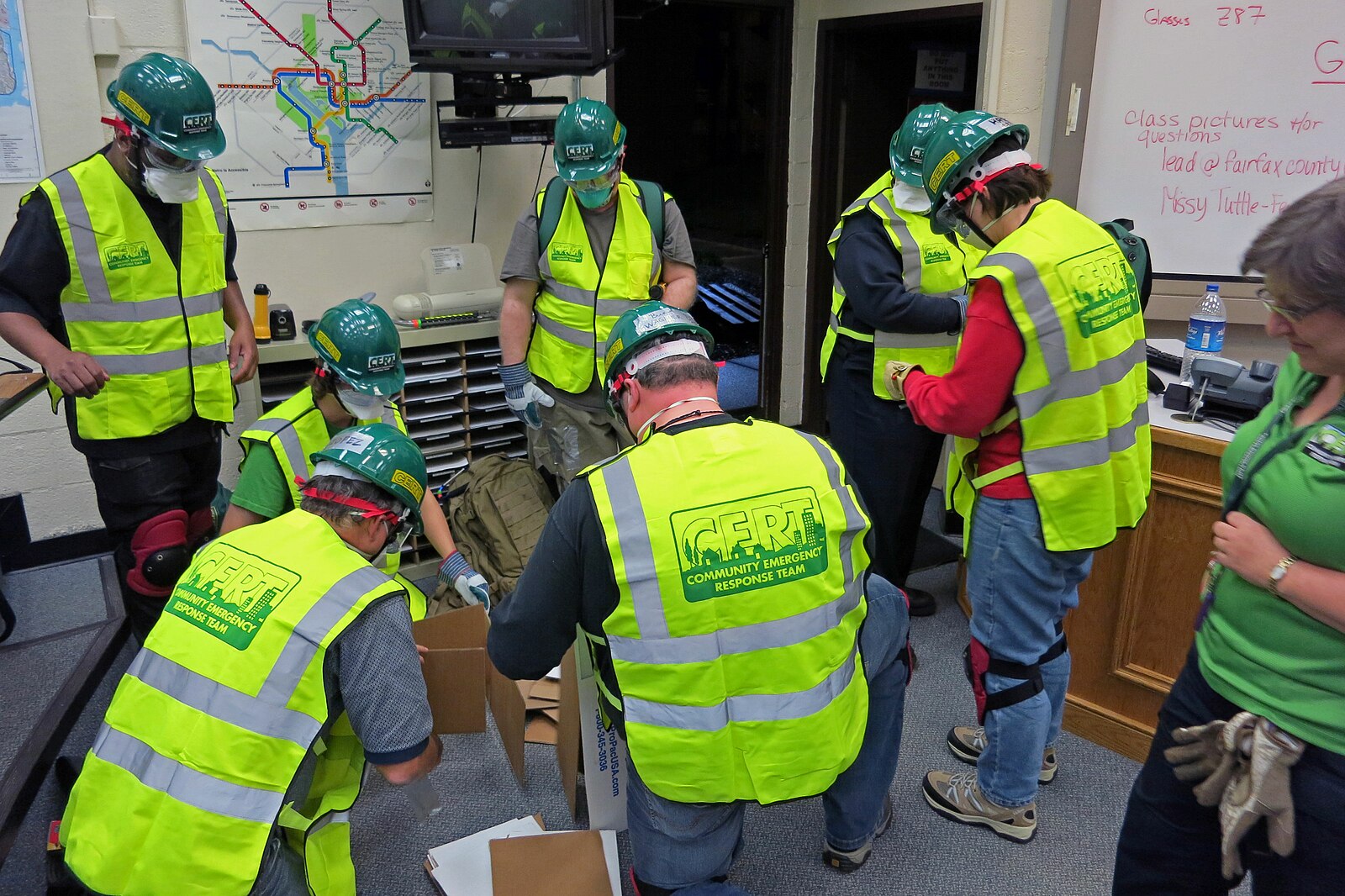
A Community Emergency Response Training course in Fairfax County, VA. Photo: Joe Loong CC BY-SA 2.0
Recommended Actions: Disaster preparedness and recovery
Hire a full-time emergency manager and chief resilience officer, and increase dedicated and trained emergency management staff.
Follow (and iterate on) FEMA’s Comprehensive Guides to develop and maintain emergency operations and communications plans.
Develop and regularly update hazard mitigation plans and comprehensive emergency response plans with climate-specific scenarios, such as high tide flooding and compound events.
Enhance social safety nets, such as emergency relief funds, to expedite financial assistance to affected individuals and communities immediately after disasters.
Develop outreach and education programs to boost local awareness of and enrollment in flood and disaster insurance.
Leverage federal, state, and local funding to adequately support emergency management.
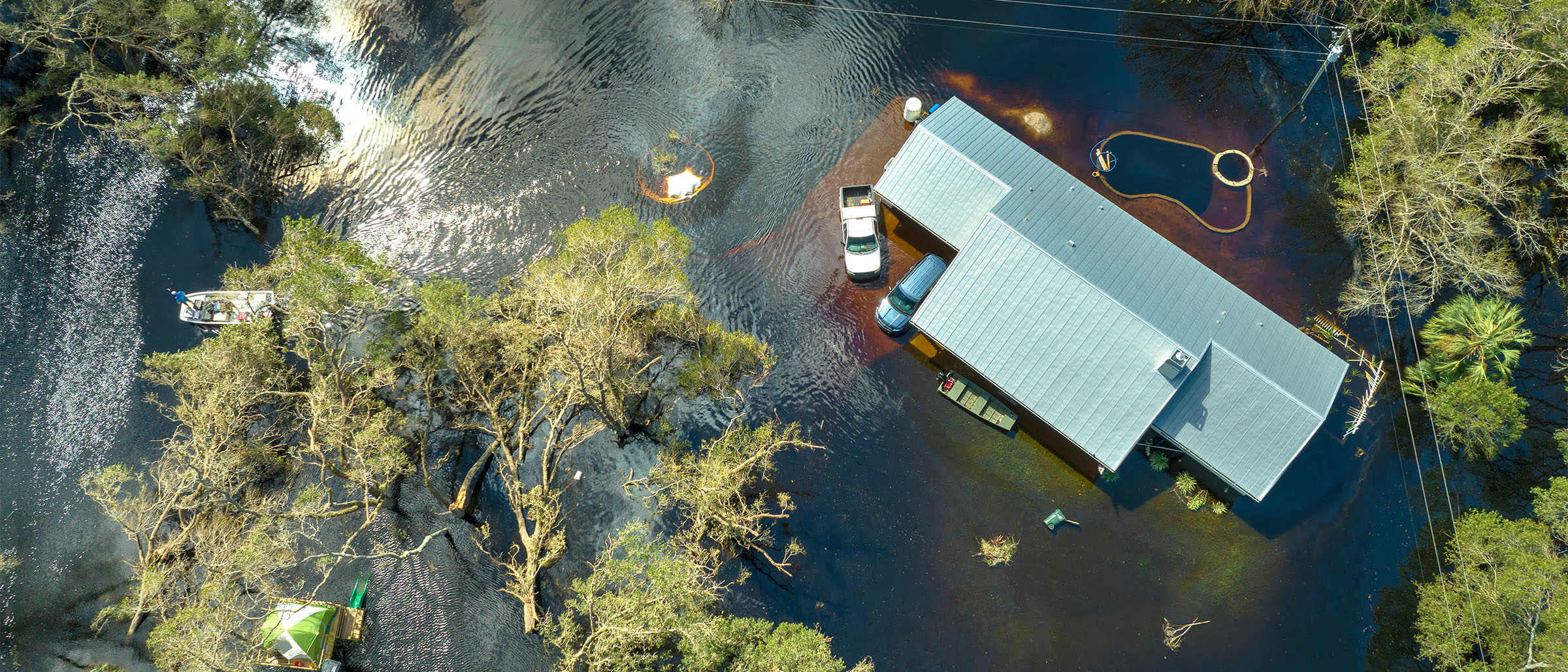
Climate-Driven Relocation
Climate-Driven Relocation
is an adaptation strategy involving the intentional movement of people, homes, and infrastructure away
from climate-vulnerable locations and into places (often called “welcoming communities”) that are further
inland or at higher elevations.7 In 2022, extreme weather events displaced
3.4 million
people living in the U.S., and up to
13.1 million
people may be displaced by 6 feet of sea level rise by 2100.
In some areas, proactive and strategic relocation will be necessary to protect the lives, livelihoods, and
cultures of coastal communities. However, federal relocation programs have largely been both
reactive and inaccessible
to the populations most impacted by climate change. Moreover, such programs often
overlook
broader community and ecological needs, such as the provision of just relocation pathways for residents,
safe and affordable housing, and the restoration (and repurposing) of vacated land. Challenges like high
population density, racialized housing patterns, and rapid development make equitable relocation in
coastal cities complex.
Alongside federal and state efforts, local government action will be critical to meet the growing urgency and
demand for relocation assistance in the U.S. Through innovative policies for housing, land use, and financing,
coastal cities can not only reduce risk, but also enhance residents' quality of life and foster multigenerational
resilience. Additionally, ongoing collaboration between cities and across sectors will be necessary to accelerate
the adoption of effective and equitable relocation policy at scale.
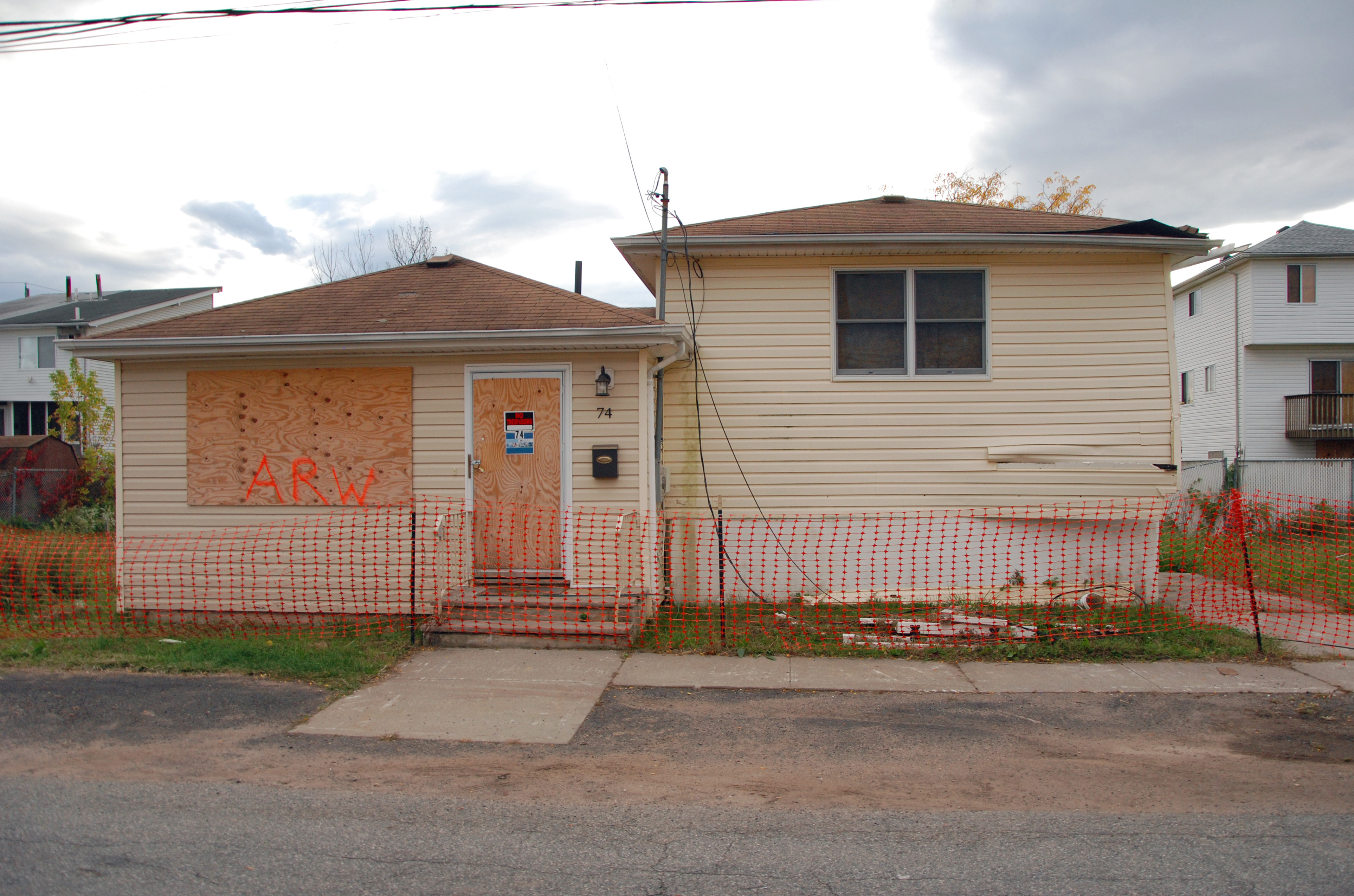
A lot in Oakwood Beach, New York City, before and after relocation. In 2012, Superstorm Sandy severely damaged the neighborhood. Homeowners responded by forming a committee to petition New York State to facilitate a neighborhood-scale voluntary buyout. 180 homeowners chose to participate. Photos: Nathan Kensinger
Housing security and mobility
13.1 million
The number of people who may be displaced by six feet of sea level rise by 2100.
Recommended Actions: Housing security and mobility
Prioritize the development of affordable, climate-resilient housing in upland areas in municipal master plans, zoning plans, hazard mitigation plans, and climate action plans.
Foster regional partnerships and collaboration among state, county, and local governments to broaden housing choices and resources for relocating residents.
Develop inclusive relocation programs that expand socioeconomic opportunities for low-income communities and communities of color who have been historically excluded from homeownership.
Provide accessible information, financial assistance, technical guidance, and other social services to residents considering or currently undergoing relocation.
Pair relocation efforts with fair housing policies, anti-displacement laws, tenant protections, and shared equity housing models.
Increase infrastructure investments (such as transportation, waste and stormwater services, and healthcare) in welcoming communities.
Land use and conservation
For coastal cities to realize the full benefits of relocation, vacated land must be repurposed and maintained in ways that strengthen flood resilience (by adapting land to absorb or buffer floodwaters), benefit coastal communities (by increasing public access to open space or creating economic opportunities), and support the health of ecosystems (by restoring and assisting the upland migration of coastal wetlands). Yet, vacated land often falls into abandonment or mismanagement. Vacated properties often either have no deed restrictions, allowing re-development, or are bound with restrictive permitting and land use regulations, making it challenging to repurpose them for ecological, cultural, or recreational purposes. Without a vision, plan, and resources for future land use, relocation in U.S. coastal cities—which face intense development pressures within limited available space—can lead to blight or risky (re)development.

Cattus Island County Park in Toms River, New Jersey, recently grew through the state’s Blue Acres program, incorporating land impacted by Superstorm Sandy.
Recommended Actions: Land use and conservation
Utilize climate projections in land use planning to identify both near- and long-term uses for vacated land.
Prevent future development and prioritize ecological protection and restoration and migration, through easements, land swaps, and the transfer of development rights, on high-risk parcels.
Prioritize a community-centered approach to land use planning to ensure relocating residents can access, benefit from, and steward new uses on the land they’ve left behind.
Embed relocation of homes, infrastructure, and other non-residential coastal land use into long-term, regularly updated regional and municipal plans (such as comprehensive plans, hazard mitigation plans, climate action plans, capital improvement plans, and watershed plans).
Support collaboration and knowledge-sharing across cities, and between land owners, land managers, local communities, and other environmental stewards to coordinate effective management of restored parcels.
Innovative finance
To support just and comprehensive relocation programs, coastal cities require dedicated, long-term, diverse, and flexible funding sources—including public, private, and philanthropic dollars. Yet, most local governments rely on competitive federal grants, which are limited in terms of their availability, accessibility, equity, and speed. Coastal cities must diversify their funding streams to expand relocation programs, provide quick, proactive, and locally responsive assistance, while also safeguarding municipal budgets.
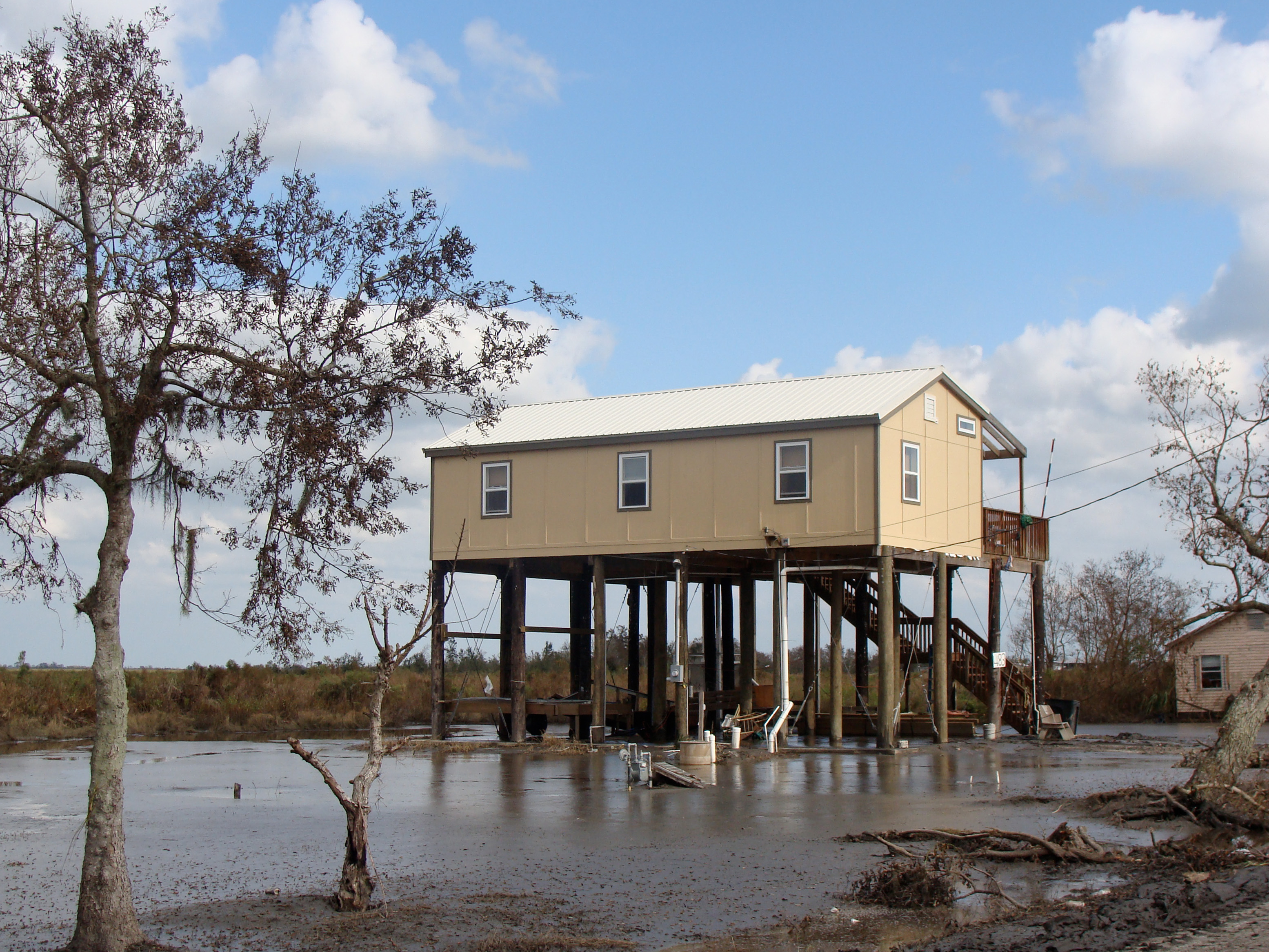
A home on Isle de Jean Charles, Louisiana. Over several decades, the island dwindled from 22,000 to 320 acres due to coastal erosion and sea level rise. The state received $48.3 million in federal grants to relocate residents. Photo: Karen Apricot, CC BY-SA 2.0 DEED
Recommended Actions: Innovative finance
Increase city government staff capacity to apply for and manage multiple and innovative funding streams.
Develop a dedicated revenue stream for relocation.
Explore collaborative approaches for relocation financing to distribute the costs and enable resource-sharing across neighboring cities, and between public and private entities.
Explore public-private partnerships and philanthropic funding to close gaps in public financing for relocation programs.
Leverage economic development and conservation finance tools, such as environmental bonds and community block grants, for the remediation, restoration, and maintenance of vacated properties.
Conclusion
Even with ambitious mitigation efforts, climate impacts will continue to
intensify
over the comingnext decades, underscoring why coastal cities must prioritize and invest deeply in accelerating
adaptation and resilience efforts. This climate readiness framework puts forward over 70 recommended actions that
coastal cities must take to address the urgency of the climate crisis, and ensure that the social and economic
well-being of communities is prioritized in climate plans.
Notably, implementing policies for coastal ecosystems, offshore renewable energy, infrastructure, community resilience,
and climate-driven relocation only represents only a portion of the sustained and coordinated investment of time,
funding, and effort required to achieve climate-ready coastal cities. UOL’s future work will support and expand
on these initial recommendations, and through research and collaboration, provide coastal cities with the necessary
tools and knowledge to implement effective policy solutions, promote environmental justice for residents, and influence
broader changes to state and federal policy.
Contributors
Staff: Alexandra Carter, Alex Miller, Sheetal Shah, Jenisha Shrestha
Co-founders: Jean Flemma, Ayana Elizabeth Johnson, Marquise Stillwell
Mahak Agrawal, Erica Asinas, Eana Bacchiocchi, Benita Lily Cheng, Natalie Cross, Lara Croushore, Megan Davis,
Isabel Jamerson, Shangtong Li, Lauren Linsmayer, Margaret Morrison, Daniela Schulman, Laier-Rayshon Smith,
Alex Swanson, Madeleine Traynor, Sonia Wang, and Michele Zemplenyi contributed to this or previous versions of
the Framework.
We are also grateful to our external reviewers for their insightful feedback.

Footnotes
- According to Urban Ocean Lab, a coastal city is a U.S. Census-designated place within a coastal shoreline county (as defined by the National Oceanic and Atmospheric Administration) with a population of 50,000 or more. Further information is available in By the Numbers: Definition, Demographics, and Climate Risks of U.S. Coastal Cities.
- Data from a joint analysis (publication forthcoming) completed by Urban Ocean Lab and Columbia University in August 2023. The researchers defined a climate action plan as “a published strategy document that is developed by a city agency or reflective of a citywide planning effort; assesses impacts, vulnerability, risks, and resilience regarding the city and its climate; and contains evidence of cross-sectoral planning.”
- As of May 2023.
- Working waterfronts refer to the collective shoreside lands, infrastructure, and waterways utilized for water-dependent activities, including commercial and recreational fishing, aquaculture, boat building, shipping, marine research, tourism, and other related commercial, industrial, and recreational ventures.
- Participatory governance refers to the active involvement of community members in a city’s decision-making process.
- All values have been adjusted for inflation in 2022 dollars.
- Climate-driven relocation is sometimes referred to as “managed retreat,” however, that latter term can imply top-down approaches that could undermine the agency and self-determination of coastal communities.
- Shared equity housing models involve a partnership between homeowners and public or nonprofit entities, where the homeowner gains affordable access to a property while agreeing to share any future equity gains with the organization, ensuring long-term housing affordability for future buyers.